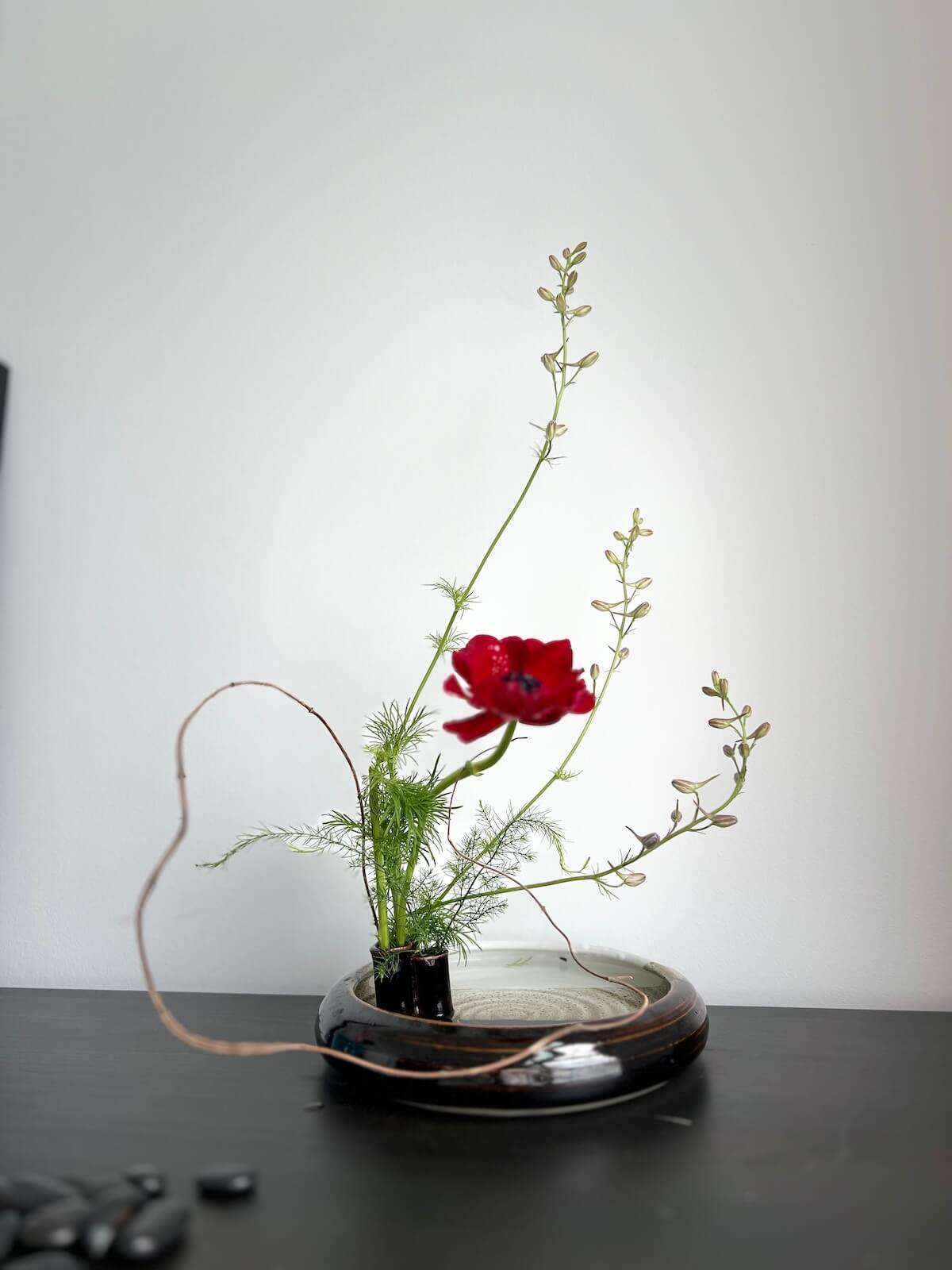I t might have been in a gallery. A quiet room. A friend's home. Somewhere you weren't expecting to be moved. You turned your head—and paused. Not because it was extravagant. Not because it shouted beauty. But because it didn't.

A moment of stillness captured in nature's most elegant form
Just a single branch, angled with intention. A flower, suspended in space. A stillness so complete it made the whole room seem quieter. And without knowing why, you kept looking.
That's how Ikebana finds you. Not with grandeur, but with grace. Not with more, but with just enough. There's a kind of tension to it—in the emptiness, the restraint, the way it dares to leave space untouched. And yet, it doesn't feel lacking. It feels alive. Present. Completely at ease with itself.
You probably didn't have the words for it then. Most people don't. You don't walk away thinking, "What a nice arrangement." You walk away thinking, "What did I just feel?" Because Ikebana doesn't just sit in a room. It shifts it. It opens a pocket of calm in your day, a space where your attention softens and your breath slows. It's not decorative. It's meditative.
That first encounter stays with you. Even if you didn't know the word for it yet. Even if you didn't know the artist, or the meaning, or the rules. You remember how it made the light feel different. How it held both movement and stillness. How it was just a few natural elements—and yet, somehow, it felt complete.
That's what makes it unforgettable. Not what you saw, but how it made you feel.
And maybe you haven't seen your first Ikebana yet. Or maybe you're ready to return to that feeling. One branch. One flower. One moment of presence.
You never forget your first Ikebana. But you can always begin again.
Begin Your Journey
Join one of our upcoming Ikebana Workshops, or book a private event — and begin with one branch. One flower. One moment of stillness.